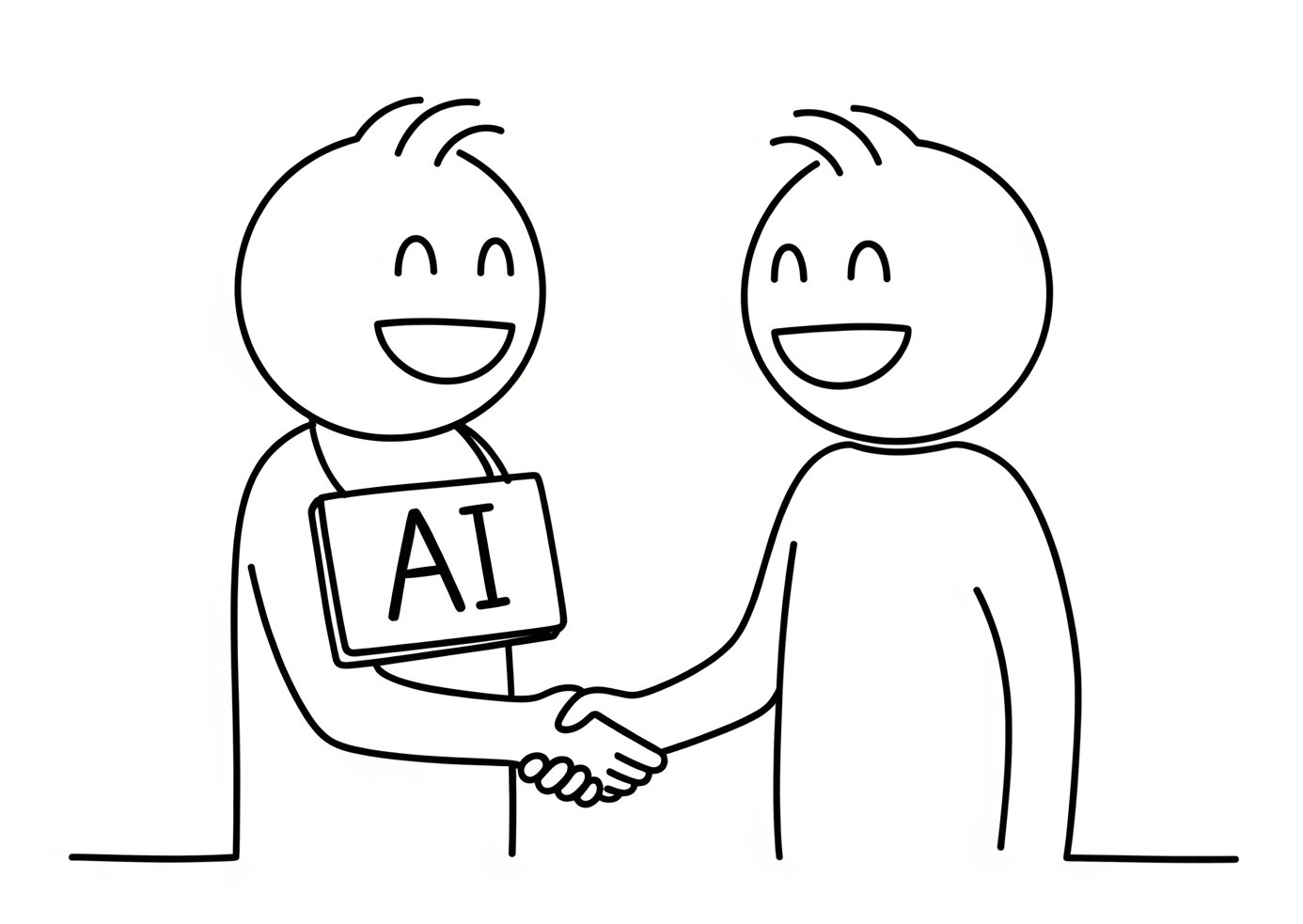We’ve all been there. You Google “quick chicken marinade” and click the top result, only to be greeted by a 1,500 word backstory about someone’s summer barbecue in 2012 – followed by intrusive ads, autoplay videos, and cookie banners. After wading through digital sludge, you finally reach the actual recipe, buried halfway down the page…


Frustrated, you turn to ChatGPT or any other AI and type: “Show me a simple chicken marinade using garlic, soy sauce, and honey.” In seconds, you get a clear, no-fuss answer. No clutter. No distractions.
This isn’t just a one-off experience – it’s part of a growing trend. More people are skipping traditional websites altogether and turning to AI tools for clean, efficient answers. But what does this shift say about the current state of the internet? And is it necessarily a bad thing?
The shift from search engines to answer engines
Search engines were once our go-to for information. You’d type a query into Google, scan ten blue links, open a few tabs, and piece together the answer yourself. It was a system built on exploration. But that’s not how people want to browse anymore.
In 2024, a study by AIPRM found that 67% of users would rather ask ChatGPT than use Google. And it’s not just about novelty – it’s about experience.
Unlike search engines, AI doesn’t ask you to sift through multiple links. It gives you a clear, concise response instantly, often with better structure, more context, and the ability to ask a follow-up. It’s personal, it’s frictionless, and, most importantly, it’s fast.
But this isn’t just a technology shift, it’s a behavioural one.
- People are less patient.
- Attention spans are shorter.
- Videos are now 30 seconds, not 10 minutes.
- We live in a world of instant food, instant deliveries, and instant answers.
AI fulfils a growing niche: the need-an-answer-now mindset. It’s not just convenient, it’s aligned with how we live.
This doesn’t mean people no longer care about depth or quality, but they want the option to start with clarity. If they want to go deeper, they will. But if they’re asking “How long to bake salmon at 200°C?”, they don’t want a blog post that starts with your love of fishing.
Websites need to recognise this shift. The modern user isn’t browsing in the same way they did five years ago. They’re swiping, tapping, skimming, and bouncing. If your site can’t serve information as cleanly and quickly as an AI model can, you’re no longer just competing with other websites — you’re competing with a chatbot that never forgets to be helpful.
Apple to develop an ‘answer engine’
Well, this article was well timed. It seems Apple has reportedly formed an Answers, Knowledge, and Information team with the goal of creating ChatGPT-like search experiences. Further proof of the shift in behaviour.
The web is drowning in its own weight
Modern websites aren’t what they used to be. Many are cluttered, slow, and written with algorithms in mind – not people. What should be a simple three-line recipe is hidden beneath:
- Long SEO-driven intros
- Pop-ups and modals
- Ads, trackers, and cookie notices
The average webpage size is now over 2.3MB, with a 38% increase in third-party scripts since 2020.
For users, it’s a frustrating experience. For developers and content creators, it’s the result of a system that rewards clicks and time on page, not clarity or usefulness.
AI feels like a breath of fresh air
AI tools like ChatGPT, Claude, and Perplexity deliver fast, focused answers – without the visual noise.
- No SEO padding or keyword fluff
- No banner ads or autoplay videos
- No cookie banners or affiliate link stuffing
AI also allows for natural follow-ups: “What if I don’t have soy sauce?” or “Can I make it vegetarian?” This conversational approach creates an experience that’s more intuitive – and less frustrating – than traditional search.
“I’ve been using ChatGPT every day to plan my meals and it’s actually changed my life”
Be warned, AI isn’t always the answer
It’s not all perfect. AI can still make mistakes – as of publishing this article, it still does not consistantly cite its sources effectively. So of course, it does depend on how the AI is being utilised and what you’re searching for.
“…algorithms tend to reproduce the classifications, assumptions, and biases that exist within their training dataset…”
University of Reading
While AI powered tools like ChatGPT offer quick, clean, and concise answers, they aren’t perfect and sometimes can lead you astray.
For example, imagine you ask an AI for a recipe modification because you have a food allergy or dietary restriction. The AI might generate a seemingly plausible substitution, but without the nuance of culinary expertise or awareness of cross-contamination risks, it could suggest an unsafe or unsuitable alternative.
The real problem: The incentives are broken
Let’s face it, websites aren’t broken because they’re poorly made – they’re broken because the system rewards bad experiences.
- If you don’t write long, keyword-optimised posts, Google won’t rank you
- If you don’t monetise with ads or pop-ups, you earn nothing
- If you prioritise clarity, your competitors outrank you with clutter
The result? The web doesn’t serve users. It serves algorithms.
What needs to change?
If we want websites to remain relevant in the AI age, they need to evolve… fast. That means going back to the fundamentals: serving users first, not algorithms or ad networks.
- Design for humans, not just rankings. Clean layouts, fast-loading pages, clear hierarchy, and strong accessibility aren’t “nice to haves” – they’re the foundation. Every extra second of load time, every jarring animation, every inaccessible button increases frustration.
- Offer real value, not content padding. If someone searches “how to stop a boiler leak,” they don’t want a 500-word anecdote about your trip to the Lake District. They want clear, actionable advice. Respect their time.
- Monetise gracefully, with minimal disruption. Ads don’t have to be intrusive to be effective. The popups, autoplay videos, cookie walls, and full-page modals are symptoms of a broken revenue model. Instead, explore alternatives: ethical ads, affiliate models that add value, micro-subscriptions, donations, or direct product offers that match intent.
- Structure content to be machine-readable and human-usable. With AI-powered search on the rise, your content needs to work on both fronts. Semantic HTML, clear headings, meaningful metadata, and structured data help both users and machines navigate better.
But more than that, it comes down to empathy. Web creators need to genuinely ask:
“If I were my audience,
how would I want to find this information?”
The answer is never:
- “After being interrupted six times by newsletter popups.”
- “Buried halfway down the page behind an SEO wall.”
- “Trapped in an infinite scroll with no conclusion in sight.”
The user has come to your website for a reason. Respect that intent. Present what they need, quickly and clearly, with minimal blockers. Guide them, don’t trap them. Assist, don’t manipulate.
Rebuild, don’t retreat

AI isn’t the death of the web – it’s a mirror. It shows us what users really want, and what the current web often fails to deliver. We shouldn’t fight this. We should be inspired by it.
This is our opportunity to rebuild a better web:
- One where content is focused, not fluffed.
- Where creators are rewarded for clarity, not clutter.
- Where users leave better informed, not more frustrated.
We don’t need to abandon websites. We need to make them worth coming back to.
AI didn’t kill the web – It has exposed its flaws
AI tools didn’t steal attention from websites. They offered users what they wanted all along: clean, accurate, and distraction-free answers. Instead of viewing AI as a threat, creators, developers, and platform owners should see it as a wake-up call. The shift toward AI-powered answers highlights what users truly want: convenience, clarity, and trustworthiness.
To win back attention, the web must evolve beyond static pages crowded with marketing gimmicks. It needs to become a place where quality content, user experience, and accessibility come first.
In short, the future of the web lies in complementing, not competing with, AI.


